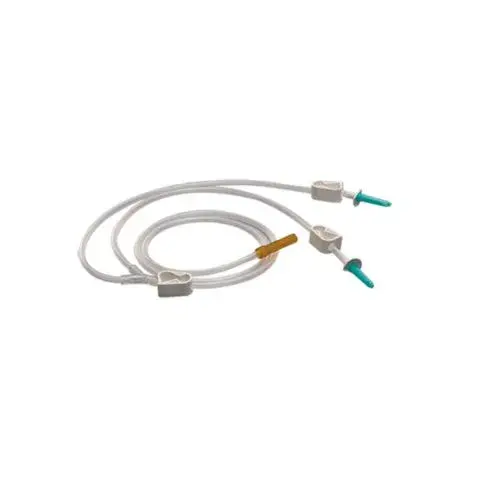Why Choosing the Right Surgical Gown Matters: A Guide for Healthcare Professionals
- Aniket Kharwar
- Aug 31, 2024
- 3 min read
In the fast-paced world of healthcare, every detail matters, especially when it comes to the safety and well-being of both patients and healthcare professionals. One often overlooked yet critical element in hospital apparels is the surgical gown. Selecting the appropriate surgical gown for different procedures and environments can make a significant difference in infection control, comfort, and overall procedural success. This guide delves into why choosing the right surgical gown matters and what factors healthcare professionals should consider.
The Role of Surgical Gowns in Healthcare
Surgical gowns are not just uniforms; they are a crucial barrier between healthcare workers and potential contaminants. During procedures, gowns provide protection against blood, bodily fluids, and pathogens, reducing the risk of cross-contamination and infection. The right gown ensures that healthcare professionals can perform their duties with confidence, knowing they are adequately protected by one of the most essential hospital apparels.
Key Factors to Consider When Selecting a Surgical Gown
Material
Breathable Fabrics: In procedures where surgeons and staff are required to wear gowns for extended periods, breathable fabrics are essential. These materials allow air circulation, reducing the risk of overheating while maintaining barrier protection.
Fluid Resistance: For high-fluid procedures, choosing a gown with excellent fluid resistance is critical. Synthetic materials like polypropylene or multilayered fabrics are often preferred for their ability to repel liquids, keeping the wearer dry and protected.
Barrier Protection
Level of Protection: Not all surgical gowns offer the same level of protection. Gowns are categorized into different levels based on their ability to resist fluid and pathogen penetration. For example, Level 1 gowns are suitable for minimal risk environments, while Level 4 gowns provide the highest level of protection, ideal for high-risk procedures involving large amounts of fluid.
Disposable vs. Reusable: Disposable gowns are designed for single-use, ensuring a consistent level of protection without the risk of cross-contamination. Reusable gowns, on the other hand, can be more economical but require proper laundering and sterilization to maintain their protective qualities.
Fit and Comfort
Ergonomic Design: A gown’s fit can significantly impact a healthcare professional’s ability to perform tasks efficiently. Gowns with an ergonomic design allow for a full range of motion, ensuring that wearers can move freely without restriction.
Comfort: Long procedures can be physically demanding, and uncomfortable gowns can exacerbate fatigue. Choosing gowns made from soft, lightweight materials can enhance comfort, allowing healthcare workers to focus on the task at hand without distraction.
Procedure-Specific Requirements
High-Risk vs. Low-Risk Procedures: Different procedures require different levels of protection. For example, in orthopedic surgery, where there is a high risk of fluid exposure, a gown with superior barrier protection is essential. In contrast, for minor outpatient procedures, a lighter gown may suffice.
Sterility: In highly sensitive environments like operating rooms, the sterility of surgical gowns is paramount. Ensuring that gowns are properly sterilized and stored can prevent potential sources of contamination.
The Impact of Choosing the Right Surgical Gown
Selecting the appropriate surgical gown is not just about following protocol; it’s about enhancing safety, efficiency, and outcomes in healthcare settings. The right gown can minimize the risk of infection, improve the comfort and mobility of healthcare professionals, and ultimately contribute to the success of medical procedures. As a key component of hospital apparels, surgical gowns play a vital role in maintaining the highest standards of patient and healthcare worker safety.
Conclusion: Making Informed Choices for Optimal Protection
In the complex environment of healthcare, every decision can have a ripple effect on patient outcomes and staff safety. Choosing the right surgical gown is a decision that should not be taken lightly. By considering factors such as material, barrier protection, fit, and procedure-specific needs, healthcare professionals can ensure they are well-equipped to handle the demands of their work while maintaining the highest standards of safety.
As the field of healthcare continues to evolve, so too will the technology and design of surgical gowns and other hospital apparels. Staying informed about the latest advancements and best practices will enable healthcare professionals to make choices that not only protect themselves and their patients but also contribute to the overall efficiency and effectiveness of their work.
Read More Blogs
The Evolution of Surgical Gowns: From Cotton to Modern-Day Protection
Why Choosing the Right Surgical Gown Matters: A Guide for Healthcare Professionals
Everything You Need to Know About Surgical Gowns: Levels, Sterilization, Expiry, and Materials
Understanding the Standards: What Makes a Surgical Gown Compliant?
Surgical Gowns vs. Isolation Gowns: What’s the Difference and When to Use Each?
Surgical Gown Innovations: The Latest Trends in Healthcare Apparel
The Anatomy of a Surgical Gown: What Every Surgeon Should Know



Comments